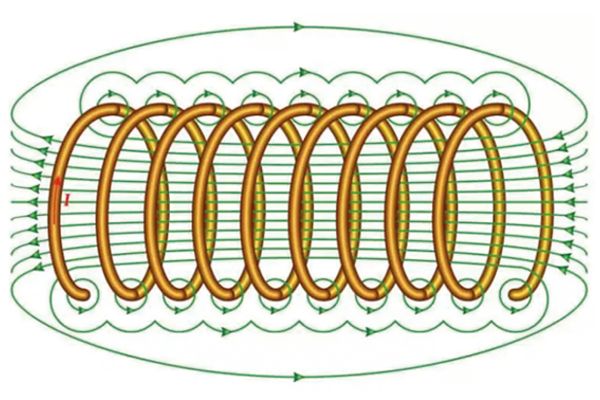There is still too much confusion around about what magnetotherapy is and how it works. In this article, we will help you better understand this therapeutic technique, and, in particular, what exactly PEMF therapy consists of.
There are two main kinds of magnetotherapy: static, and pulsed.
In the following paragraphs, we will focus only on pulsed electromagnetic field (PEMF) therapy, because this kind of magnetotherapy has a wide range of applications in treating various pathologies affecting the musculoskeletal system and more. Indeed, magnetotherapy with pulsed rather than static electromagnetic fields has seen much more interest in the scientific literature, with numerous clinical studies demonstrating its therapeutic benefits.
The acronym PEMF is an abbreviation of PULSED ELECTROMAGNETIC FIELDS. But what exactly are they?
An electromagnetic field is generated by an electric current flowing through one or more copper or aluminium wire coils, called solenoids, or around a radiant circuit. The device that generates the electric current regulates the intensity and frequency of the magnetic field it gives off.
In the case of low-frequency, high-intensity PEMF therapy, which makes use of solenoids, the frequency and intensity are respectively measured in hertz (Hz) and gauss (G).
Instead, in the case of high-frequency, low-intensity PEMF therapy, which uses radiant circuits, or antennas, the frequency, measured in megahertz (MHz), can vary from around 18 MHz up to as much as 900 MHz, while the intensity is very low and is usually measured in milliwatts (mW).
In both cases, the electromagnetic field is emitted at precise intervals and with a preset depth and frequency.

Clinical studies in this field have shown that such electromagnetic fields are able to regenerate a biomagnetic field at the cellular level, favouring the intra- and extra-cellular exchange of nutrients and waste.
This biological mechanism makes PEMF therapy the perfect ally in relieving pain and inflammation in bones, muscles and joints.
Furthermore, it has been shown that this therapy offers multiple benefits to people suffering from musculoskeletal pathologies such as:
As mentioned above, magnetotherapy is a therapeutic technique that can either be static or pulsed.
The difference lies precisely in the way the magnetic field is emitted, whether continuously or at intervals.
There are many PEMF therapy devices on the market, but they must be chosen with care, depending on the type of frequency and intensity they emit and the pathology they are intended to treat.
This is why there are two categories of PEMF therapy devices:
High-frequency magnetotherapy devices are more recommended for the treatment of soft tissues, and promote healing, the re-absorption of oedemas, and the reduction of inflammation.
The second type of device, on the other hand, allows for the treatment of pathologies related to the skeletal system, such as osteoporosis, arthritis, oedemas and fractures. In general, low-frequency, high-intensity magnetotherapy allows for the treatment of a larger number of pathologies using a low frequency electromagnetic field.
PEMF therapy is ideal for treating chronic pain and inflammation relating to the musculoskeletal system. This means that the majority of areas of the body from the neck down to the feet can be treated.
PEMF therapy treatment times are medium to long, depending on the diagnosed pathology. On average, a session requires at least 3 or 4 hours of treatment a day, for a duration of at least 45 consecutive days. Certain degenerative pathologies such as osteoporosis, arthritis and arthrosis require the use of magnetotherapy for 8 consecutive hours and treatment cycles up to 90 days, to be repeated during the year.
Unfortunately, it is not possible to identify a precise time for the appearance of the first benefits, since, as mentioned above, treatment times depend on various factors, including the patient’s age, state of health, pathology being treated, and many others.
To carry out a PEMF therapy session, no particular precautions need to be taken. All you need to do is wear cotton clothes, or, in any case, natural fibre fabrics, and correctly position the applicator with its solenoids on the area to be treated. Once you start the program, just read a good book or watch a good film, and the device will do everything by itself.
Remember that for the success of the PEMF therapy treatment, the solenoids must be positioned correctly on the area to be treated.
We are aware that 3-4 hours of therapy per day, for at least 45 consecutive days, are long treatment times, and might make you doubt its benefits. But have no fear! Many clinical studies have demonstrated the benefits of PEMF therapy in combating pain and inflammation.
Indeed, the main benefits of this therapy include:
PEMF therapy is a painless therapeutic technique.
It is one of the physical therapies that has the least number of contraindications. It can be carried out by anyone as long as certain important warnings indicated in the user manuals are followed, mainly concerning:
For such reasons, we always recommend consulting with your doctor in order to understand exactly which pathology has been diagnosed and if you fall into one of the cases listed above.